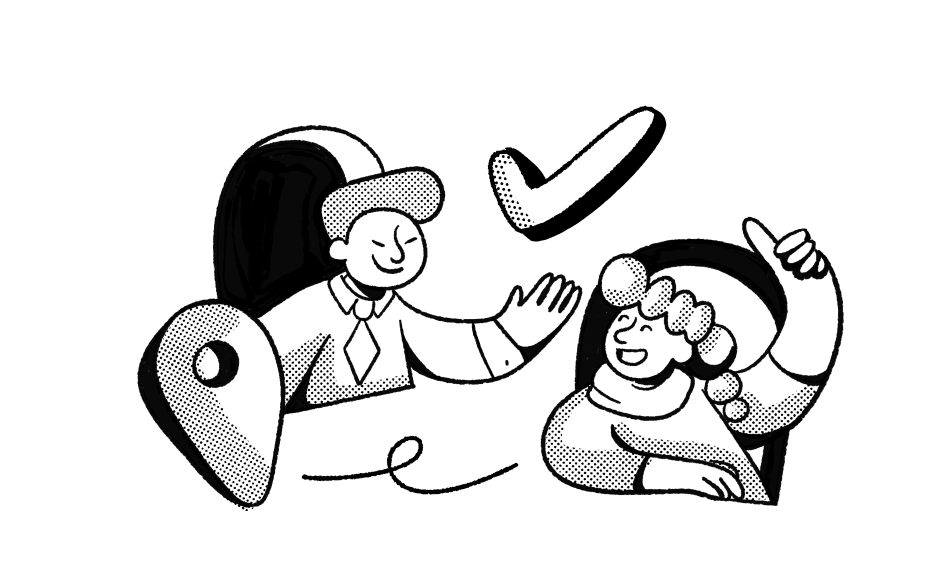This article is part of our Building in Public series where our Remote Operations team shares our experiences as we build and manage a distributed workforce at Oyster. Our hope is that by sharing our tips, strategies, and lessons we've learned along the way we can inspire other teams to adopt a new, distributed way of working.
The world of work looks a lot different than it did a few short years ago, and it’s evolved in ways that we could never have anticipated. In a recent HR report, almost half (48%) of HR professionals surveyed said they’re thinking more deeply about flexible work arrangements for staff, while 43% said they’re focusing more strongly on supporting distributed work.
The pandemic may have given some organizations the push they needed to adopt a remote-first model, but for many, it was already in the works. Organizations that are building companies across borders know that high-performing teams are no longer limited by geographical location.
But a new way of doing things comes with a new set of challenges. As more companies move to a fully distributed workforce model, People Operations leaders everywhere are being asked the tough questions that no one really has answers to just yet. What does this way of working mean for our employees? What happens to our company culture? How do we socialize? How does onboarding work?
That’s where this series comes in. In it, we’ll be sharing our experience of building and managing a distributed workforce at Oyster.
Why build in public?
If you’re not familiar with Oyster just yet, allow me to introduce us: We believe where you are shouldn’t govern what you do. And by distributing opportunities around the world, we can help build more diverse teams and create positive social impact along the way. Our platform helps organizations do that, but I’m not here to talk about our product (I’ll leave that to our marketing team). Instead, I want to use this series as a place to share our journey to becoming the best distributed organization possible.
We wanted to call the series Building in Public because it gives visibility into a process that isn’t typically out in the open. There’s a reason companies don't usually like showing off unfinished products or processes: it’s not always sunshine and rainbows, and there’s a lot of learning on the way to building something great.
Because the world of distributed work is still relatively new, there really aren’t a lot of companies investing resources into being great distributed teams in the way that we are right now. And there are even fewer companies that have this all figured out. For that reason, we’ve decided to share our stories so you can see exactly what we’re doing—the things that have worked and the things that haven't worked—and apply them to your teams.
What this series will cover
In order to succeed in the world of remote work, most companies have to unlearn their traditional ways of doing things. As we’ve begun to do this ourselves, we’ve found there to be very few examples that give authentic takes on what building a thriving remote organization really involves.
So together in this series, we’ll be diving into how to deliberately design and build a culture as a distributed organization—and what needs to be considered in order to do it right. At Oyster, we’ve worked hard to assemble a team of people from other organizations that have paved the way in the world of remote work, and I think that puts us in a pretty good place to be sharing our experiences.
Some of the early topics we’ll cover include piloting an asynchronous work week, diverse hiring practices, remote team social events, onboarding new employees in a remote environment, and decision making at work.
We won’t be talking much about building our product in public, so if you came here looking for that kind of building series, you might be in the wrong place. Since we are building a global employment platform alongside our distributed team though, we may touch on things that we're doing that have influenced the product, and how we're feeding our lived experiences into it.
Disclaimer: We’re still learning too
We're sharing our stories of triumphs and failures so you can learn from our mistakes and hopefully not repeat them. But with that said, there is no guarantee that if something worked for us, it'll work on your team. This is a process, and we’re exploring it together. I would always suggest considering the unique circumstances of your own company relative to what we've done, and whether it might be transferable.
Think of this series as the start of a community. Come here to read about what worked and what went wrong, like you’d chat to any of your Remote Operations or People Operations peers and friends. We can’t wait to show you what we’ve been building.
Ready to dive in? Get started with the first instalment of our Building in Public series here.
About Oyster
Oyster is a global employment platform designed to enable visionary HR leaders to find, hire, pay, manage, develop and take care of a thriving global workforce. It lets growing companies give valued international team members the experience they deserve, without the usual headaches and expense.
Oyster enables hiring anywhere in the world with reliable, compliant payroll, and great local benefits and perks.














_Leader_Leader%201%20(2)%20(3).svg)
_Leader_UnitedKingdom_Leader%201%20(1).svg)
_Leader_Europe_Leader%201%20(1).svg)
_Leader_Mid-Market_Leader%201%20(1).svg)
_Leader_Small-Business_Europe_Leader%202%20(2).svg)
_Leader_Small-Business_Leader%201%20(1).svg)
_FastestImplementation_Small-Business_GoLiveTime%201%20(1)%20(1).svg)